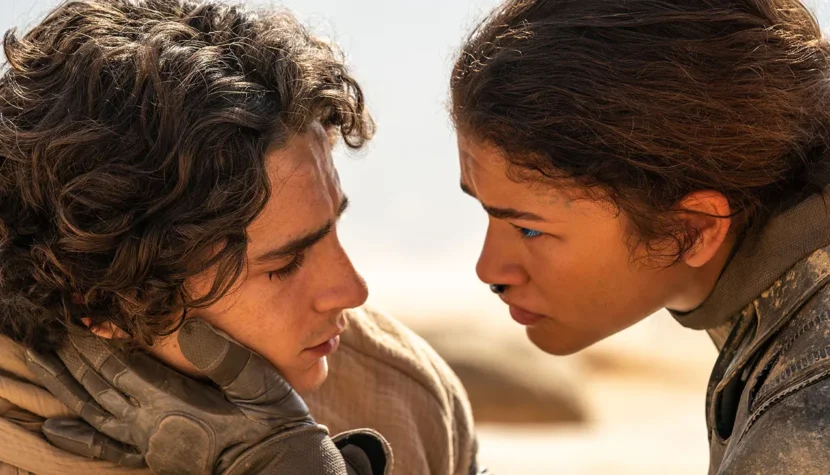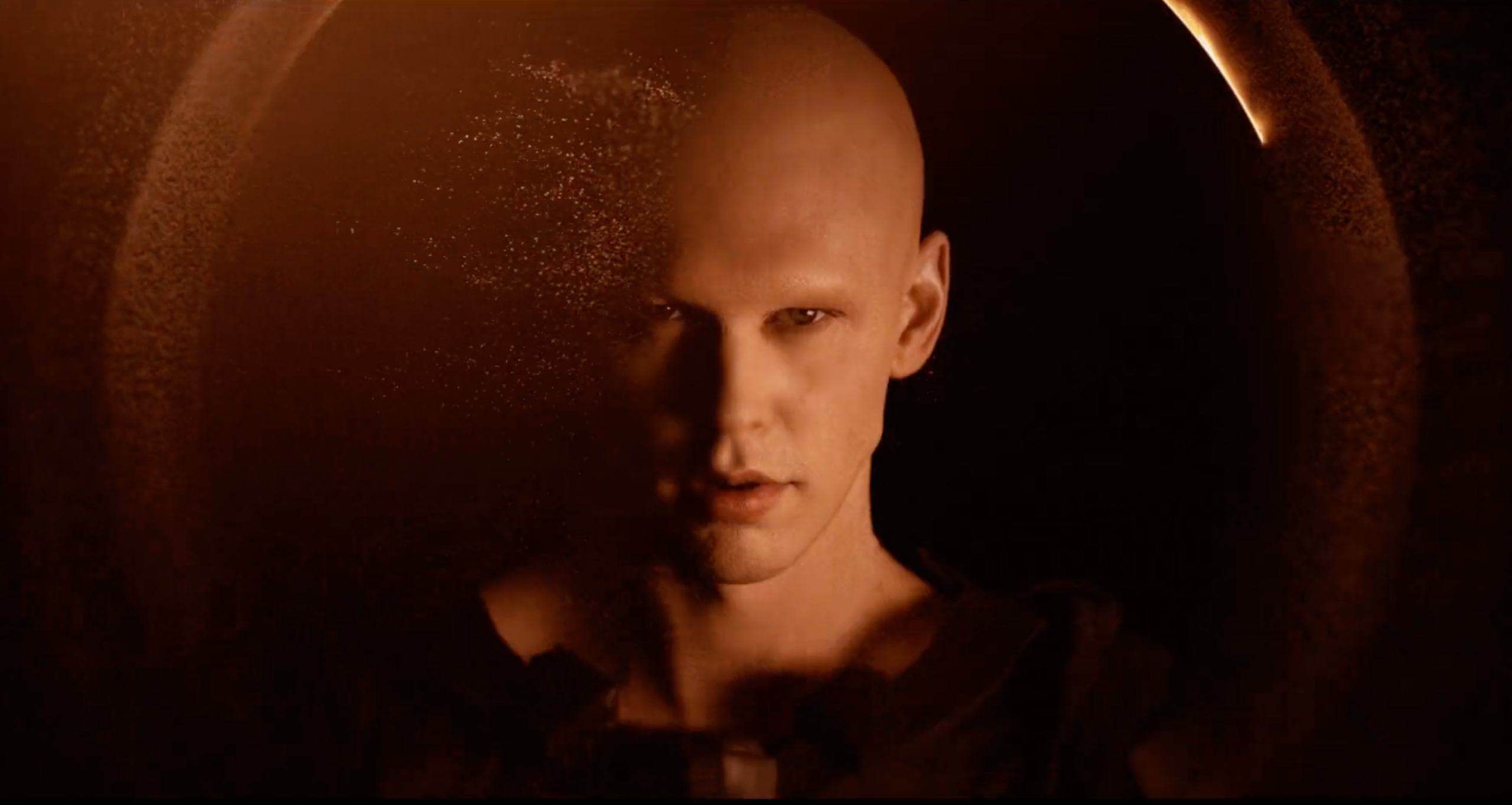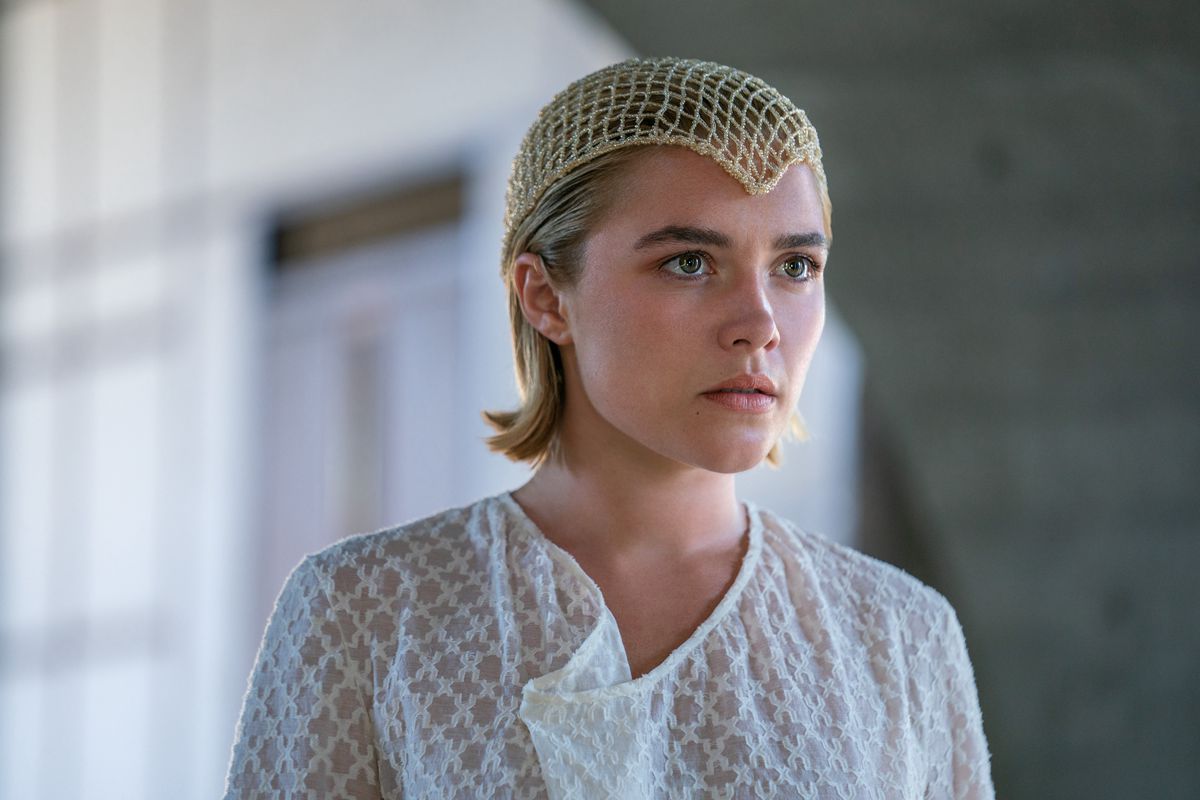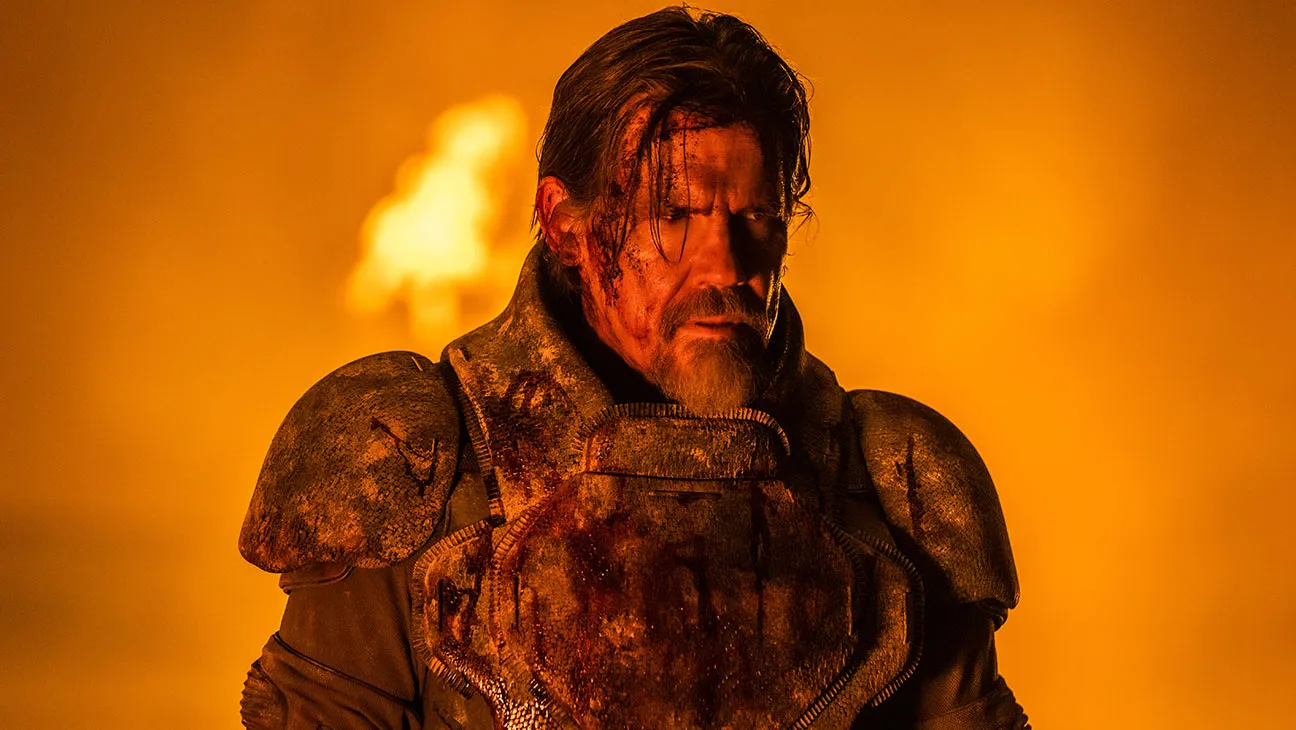DUNE: PART TWO. Far from masterpiece [REVIEW]

I’ve already gotten used to reviewers who are actually marketers and even before the premiere they define a film as a “masterpiece.” In the fast-paced promotional campaign of “Dune: Part Two,” high-caliber words are also being used. However, Denis Villeneuve’s latest film definitely doesn’t deserve the status of a “masterpiece,” although it’s a good title within its category. However, considering all the factors and the associated high expectations – the unquestionable talent of the director, the successful first part, the excellent literary source – watching the second part of “Dune” turned out to be primarily a disappointment for me, an image of painfully wasted potential.
I belong to the group of viewers who greatly enjoyed “Dune” from 2021. The film was a breath of fresh air for me in mainstream entertainment, evidence of the creative potential still present in Hollywood, an example of the perfect compromise between the author’s artistic vision and the demands of a major studio. I was impressed by the meticulous exposition, the richness of the created world, the mystical atmosphere, and the unhurried pace at which we witnessed the inevitable downfall of the Atreides family. I watched this fatalistic, almost Shakespearean tragedy with bated breath, and the war ritual of blood on the planet of the Sardaukar is one of my favorite movie scenes ever. Unfortunately, returning to Arrakis in 2024 doesn’t hold the same charm for me anymore. Villeneuve seems to have been too concerned with the complaints of some viewers about the slow pace of the first film. In the second part, more does indeed happen; which as we know, doesn’t always mean better.

In the second part, the director focuses on bringing to the screen what has aged the most in the literary “Dune” and is the least interesting, namely the action itself. Paul Atreides’ story is quite banal; we’ve seen similar motifs in cinema thousands of times before. The book from 1965 had ordinary bad luck – others (ahem, George Lucas) managed to copy its ideas before it received a full adaptation. In “Dune: Part Two,” the most interesting and relevant components of Frank Herbert’s prose – reflections on politics and religion, impressive world-building, an intriguing vision of the future and various paths of human evolution, the conflict between ecology and development – do not find a satisfying translation into the language of film. Villeneuve doesn’t even come close to the depth of the original. It’s all the sadder because in the first part, the director had no trouble adding depth to the created world. The second part is just conventional, contemporary Hollywood cinema – still better than Marvel’s recent antics, but still totally forgettable. There’s no talk of taking the time to create the right atmosphere, or of showing more amazing places in the world of the future: the viewer is thrown into action, which mechanically ticks off the next turning points in Paul Atreides’ life. Too often, the driving force behind events is words and stale dialogues, and too little happens on the screen or is suggested visually. I believe that some group scenes are simply poorly directed, like the argument between Chani and Stilgar, where the other Fremen stand motionless, bored like extras, rather than being characterized as warriors with their own opinions.
As someone who perceives cinema very sensorily, I’m pained by how little emotion “Dune: Part Two” provided me with on the level of sound and image. There are two sequences for which it’s worth seeing this film in the cinema: the black-and-white death games on the Harkonnen planet and Paul’s first taming of the sandworm. These are the best scenes; still too few for a film from which I expected an audiovisual feast. In its worst moments, “Dune: Part Two” reminded me of the Star Wars prequels: it’s over-talked, excessively static, constantly breaking the rule of “show not tell” (all characters, including the mysterious Bene Gesserit sisterhood, talk very precisely and pedantically about their intentions and goals, leaving no room for doubt). Visually, the whole thing gets stuck in boring desert dunes, and thematically in unbearably pompous dialogues about “destiny” and other lofty matters. I’ve never been a fan of Hans Zimmer’s bombastic compositions, but in “Dune: Part Two,” there are definitely too few strong musical accents: in most scenes, the soundtrack doesn’t draw attention to itself. The romantic subplot feels a bit forced, a bit like from another film dedicated to a teenage audience, but there’s no tragedy on the scale of Padme and Anakin (although there’s plenty of sand), maybe except for one very kitschy scene with a dreamy Chalamet looking at Zendaya so deeply lost in thought that he stops hearing her words.

Chalamet is a whole separate topic (and problem). He is the best evidence that not every actor is suited for fight scenes, and also that action movie stars, often called talentless, deserve respect. In the first few minutes of the film, we get a bizarre duel between the main character and a heavily built Sardaukar, and after a few initial exchanges of blows, we realize that only in the movies could Paul Atreides come out of such a fight alive. Chalamet simply lacks physical coordination, and in fight scenes, he looks, bluntly speaking, awkward. While he performed well as a young, idealistic heir of the Atreides family, he doesn’t convince at all in the second part, as a respected warrior and leader of the tough, very unfriendly Fremen towards outsiders. For the sake of fairness, the poorly conceived screenplay doesn’t help the actor, in which the huge transformation taking place in Paul happens too suddenly and without adequate groundwork. The young boy transforms into a messiah as if by the snap of a finger, and we’re supposed to take his alleged charisma at face value, although we don’t feel it, because Chalamet doesn’t convincingly portray a leader. At the same time, the creators missed the opportunity to reflect on the deceptive charm of demagogues and the sinister spell of gurus: such critical themes regarding the main character are absent from the film; and Chani’s doubts seem more like the demands of a neglected lover than serious accusations against Paul.
Paul Atreides’ journey to avenge his father is somewhat too straightforward and lacking in real challenges; we root for him more out of memory of Leto and antipathy towards the Harkonnens than sympathy for the character himself, with whom it becomes increasingly difficult to identify with by the hour (and the film is almost three hours long: too much). Chalamet pales in comparison, especially with the well-prepared Austin Butler, who embodies Feyd-Rautha Harkonnen, the main antagonist of the second part. Now that’s a screen beast! Butler’s theatrical, bordering on exaggerated performance best embodies the captivating strangeness and extraordinariness contained in the literary “Dune”; here we encounter a man so changed by evolution that we no longer find any trace of humanity in him – and yet he exhibits many atavistic, most primitive behaviors, such as cruelty.

Aside from the young Harkonnen, the most interesting character in the film is played by Javier Bardem, Stilgar, the hardy leader of the Fremen. The rest of the star-studded cast doesn’t have much to do, and it’s a bit of a pity that the budget went to their salaries rather than, for example, more futuristic landscapes and visuals. Florence Pugh and Christopher Walken (the Emperor and the Princess) spend most of their screen time either delivering speeches or standing helplessly (even when they watch the fate of their empire hang in the balance). Lea Seydoux is as magnetic as ever, but her role is merely episodic. Unfortunately, Charlotte Rampling, Stellan Skarsgard, and Dave Bautista appear on screen less often than in the first part, which is regrettable because each of their characters was distinctive and promised to be interesting. On the other hand, Anya Taylor-Joy’s performance is so far only a teaser of a character that will become significant in future installments.
Rebecca Ferguson also fades during the action. Such an interestingly outlined subplot of a mother who must reconcile love for her son with her beliefs and faith takes a back seat. Lady Jessica simply disappears from the screen and Paul’s life at a certain point. This is, of course, related to – without giving away too much – a certain transformation taking place within her, but the creators found no way to make viewers understand what’s happening inside the character, even with a visionary scene. Similarly to Paul’s transformation, her metamorphosis seems too hasty and unconvincing.
Perhaps my criticism is too malicious, but my disappointment is even greater. I’ve been waiting for this film for a long time, and now I only feel disappointment. When the potential is enormous, its underutilization and remaining at an average level hurt the most. I’m convinced that most viewers will like “Dune: Part Two” – and what’s wrong with that? That they won’t remember anything from this film in a month? Absolutely nothing, but I hold masterpieces to slightly higher standards.

